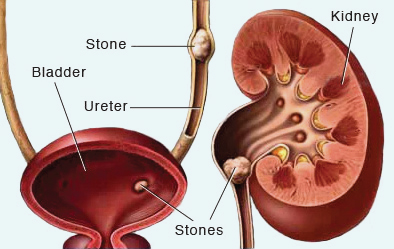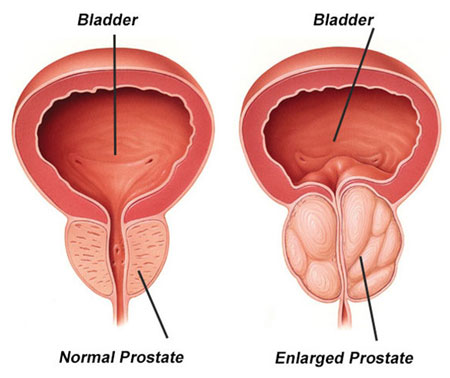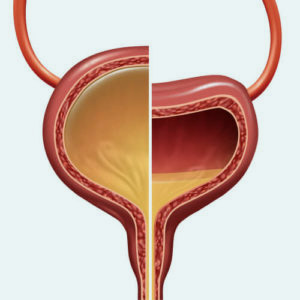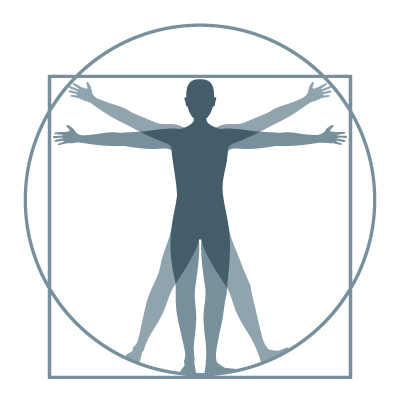Medical Services
Wangaratta Urology offers a range of services involving diagnosis and treatment of a wide range of conditions involving both male and female urogenital tracts.
Kidney Stone Disease

Kidney stones are very common affecting 1 in 10 Australian men and 1 in 35 women. The composition of stones vary with most being calcium based in nature. Other stone types include uric acid (gout type), infection or inherited such as cystine. The cause of stone formation is often dehydration but other factors such as diet, medication or medical disorders may play a role.
SYMPTOMS
Kidney stones can be extremely painful if the stone migrates into the ureter (tube between kidney and bladder), or completely symptom free if in the kidney. Stones may also present with blood in the urine either visible or microscopic.
TREATMENT
Small stones often pass without intervention, in larger or very symptomatic stones a small telescope can be passed under an anaesthetic into the ureter to find the stone and break it down with a laser (lithotripsy). this is usually day surgery and minimally invasive and available locally in Wangaratta.
Sometimes in infection or if the ureter is too tight a stent will be placed and then the stone laser procedure will be deferred for a few weeks. Most stents can be symptomatic with intermittent bleed, discomfort or bladder irritation but play an important role in allowing the kidney to drain.
There are other treatments available including shock wave lithotripsy or a percutaneous procedure to puncture the kidney to extract the stone.
Benign Prostatic Hyperplasia (BPH)

If you are experiencing a weaker stream, or getting up to the toilet more frequently at night you likely have a enlarged prostate.
BPH is a very common condition that affects up to 80% of men in their lifetime and is usually distinct from prostate cancer.
SYMPTOMS
Symptoms of BPH include: deterioration in stream, straining to void, dribbling, hesitancy, frequency, urgency and waking overnight to void.
This can be measured objectively with an IPSS (International Prostate Symptom Score)
Download IPSS Form HERE
DIAGNOSIS
Although not usually related to prostate cancer, work-up usually involves a blood test to screen for prostate cancer, urine test to exclude infection and a renal tract ultrasound will usually be organised, a digital examination of the prostate may also be performed.
TREATMENT
Treatment of BPH depends on a number of factors including the degree of bother of the symptoms as well as bladder emptying. Treatment may range from watchful waiting or modification of lifestyle factors such as caffeine intake through to medication or surgery.
Treatment is usually tailored to individual circumstances. Surgery is generally minimally invasive and can involve TURP (Trans Urethral Resection of Prostate or ‘re-bore’) which usually involves a stay in hospital with a catheter and has been used successfully for decades. Techniques such as UroLift® which involves stapling the prostate open and is usually a day stay procedure without a catheter. See more information on UroLift®
Voiding Dysfunction

Bladder pain, urinary frequency and incontinence can have a huge impact on physical and mental health. Many patients can find the symptoms embarrassing and debilitating resulting in social isolation.
There is not always an obvious cause but previous childbirth, surgery, recurrent infections may all have an impact.
Mark is experienced in investigating and managing men and women with a variety of bladder symptoms. Treatment options include lifestyle modification, pelvic floor physiotherapy or relaxation, bladder Botox injections, urethral slings and artificial sphincter surgery.
In order to diagnose some of these conditions urodynamic studies may be required and are available in Wangaratta.
Men's Health/
Sexual Health

Mark also specialises in identifying and treating a range of Men’s Health conditions including:
Testosterone is the major androgen (sex hormone) in men and is responsible for normal reproductive and sexual health, a decline in testosterone levels can lead to fatigue, loss of libido (sex drive), erectile difficulties, reduced muscle mass as well as mood swings, irritability and loss of concentration.
Causes include genetic or medical conditions affecting either the testicle or the pituitary gland. Mark is able to diagnose or mange this condition which usually requires testosterone replacement in the form of injections or gel.
If you’re having difficulty getting or maintaining an erection, this is called erectile dysfunction. It’s not a disease, but a symptom of another problem, which might be physical, psychological, or a mixture of both. Erectile dysfunction is very common.
An Australian survey showed that at least one in five men over the age of 40 has an erection problem, and about one in ten men are unable to have erections. There are multiple cause either physical, psychological or a combination of both.
Mark is experienced in diagnosing and treating this common problem. Treatments include medication, sexual counselling, or more invasive treatments such as intracavernosal injections (available at Wangaratta Urology), vacuum pumps or penile prosthesis.
Peyronie’s disease (pay-roh-neez) is when tissue in the penis hardens permanently and a lump of scar tissue (a plaque) forms on the lining of the penis. This hardened area stops the penis from stretching normally during an erection, and can affect its size and shape when erect.
In severe cases, the hardened area can include the muscle and arteries of the penis, leading to problems with erections.
Treatment is generally only indicated if the curvature is affecting satisfactory intercourse and usually involves surgery to straighten the penis.
Vasectomy is offered at Wangaratta Urology either under local anaesthetic or under general anaesthetic.
FURTHER INFORMATION
The inability to retract the foreskin is called phimosis. If the phimosis is mild then it can be treated with a topical steroid cream. If this fails or the phimosis is more extreme, then a circumcision is usually required.




